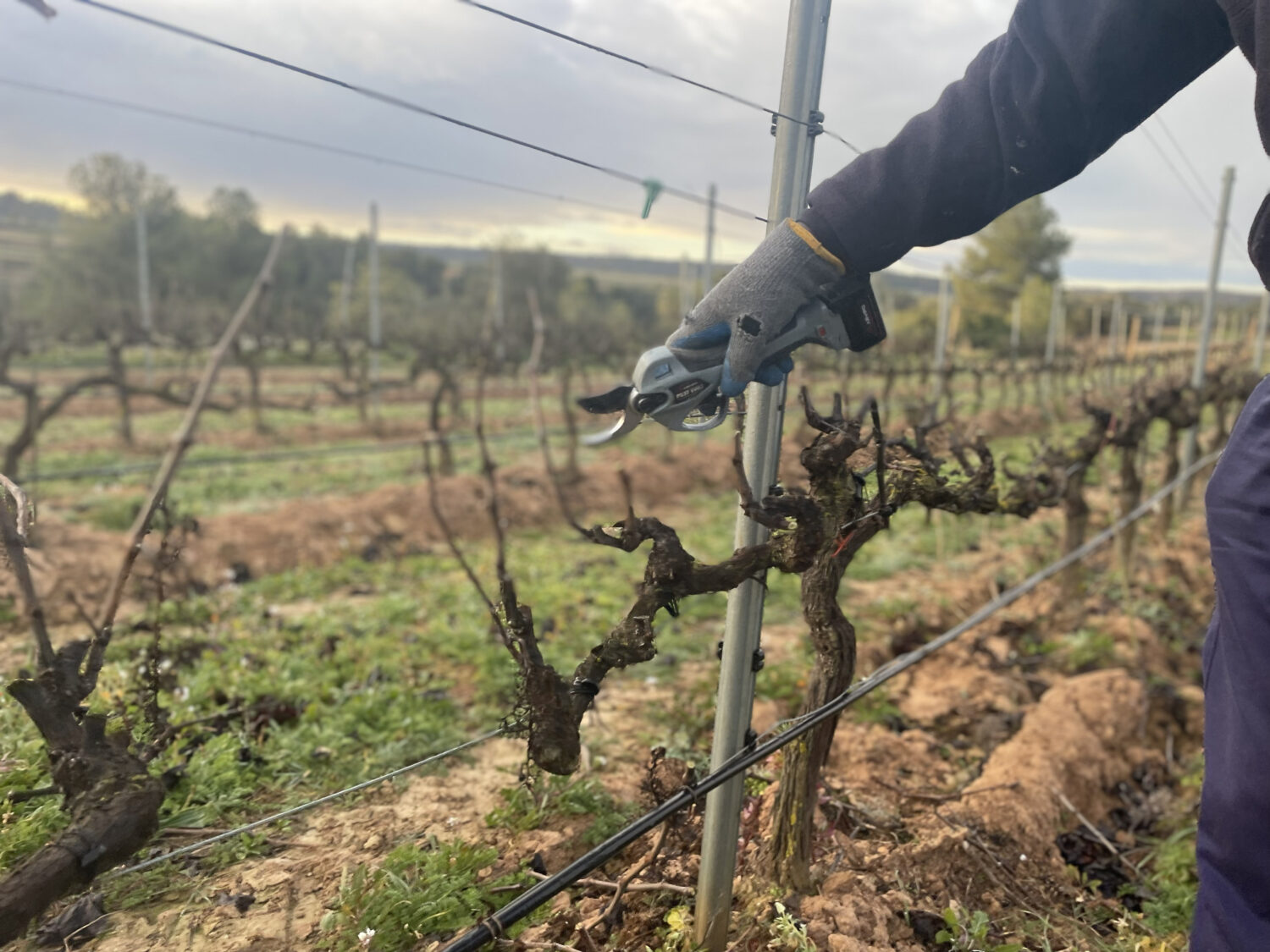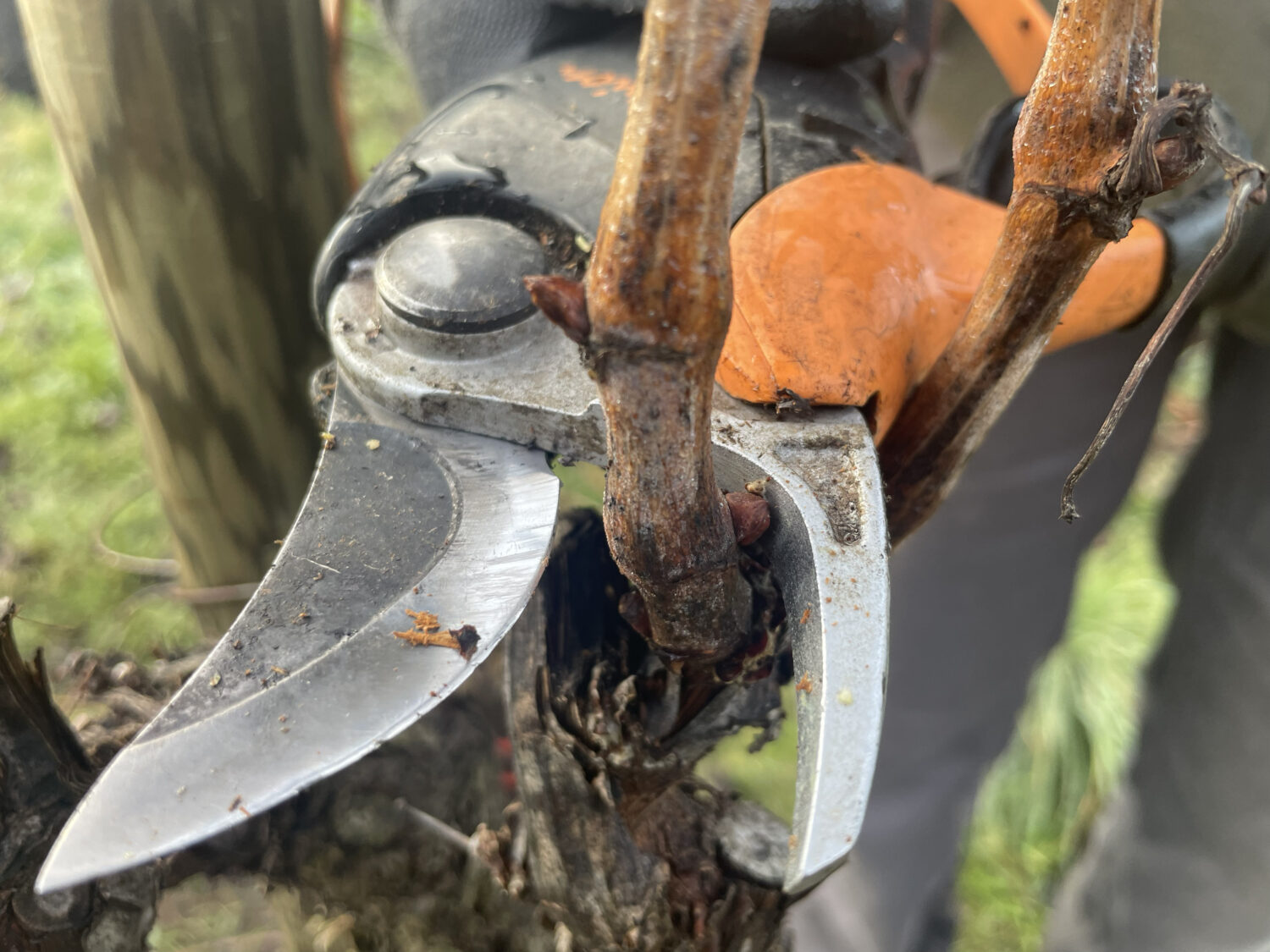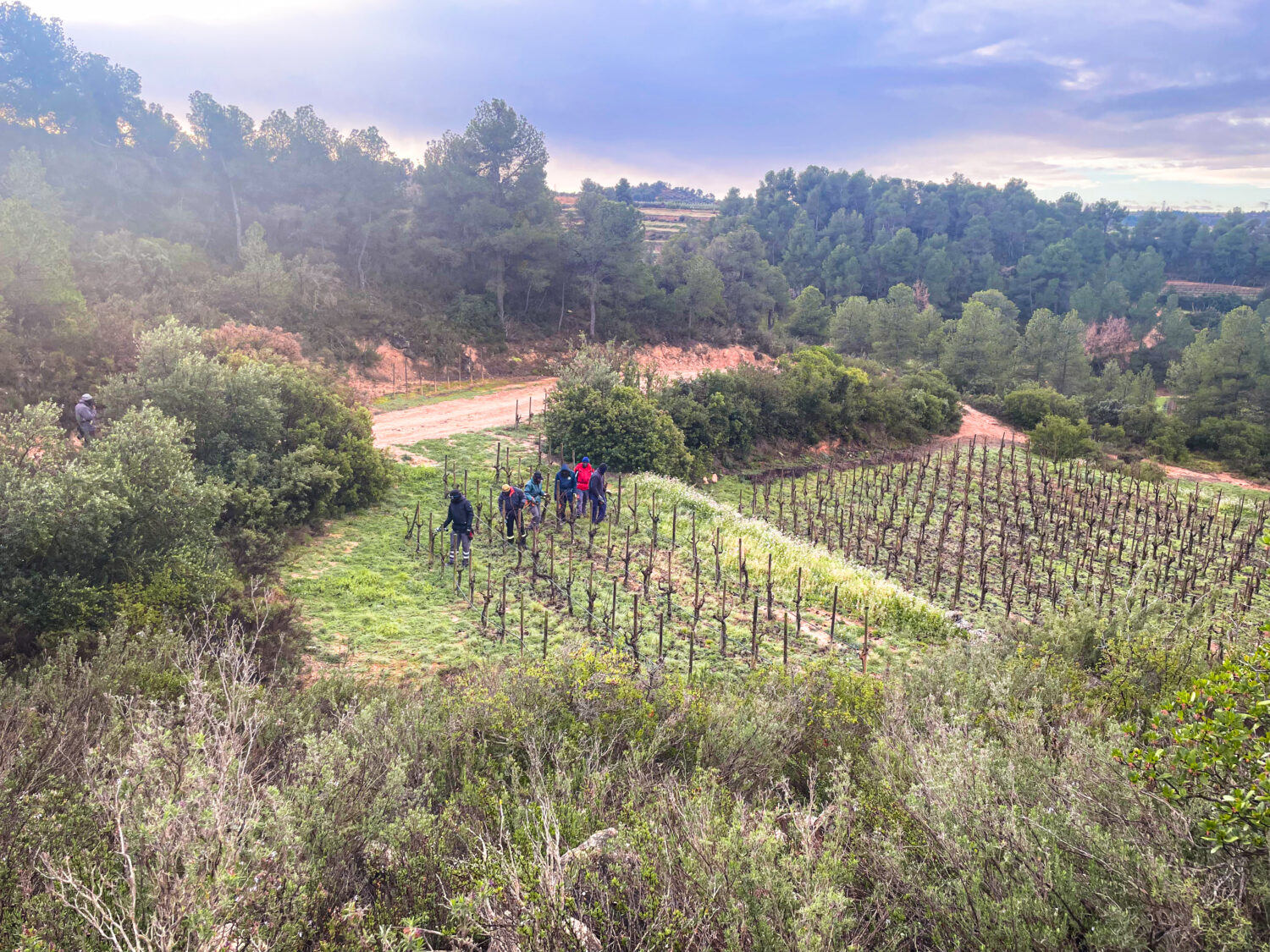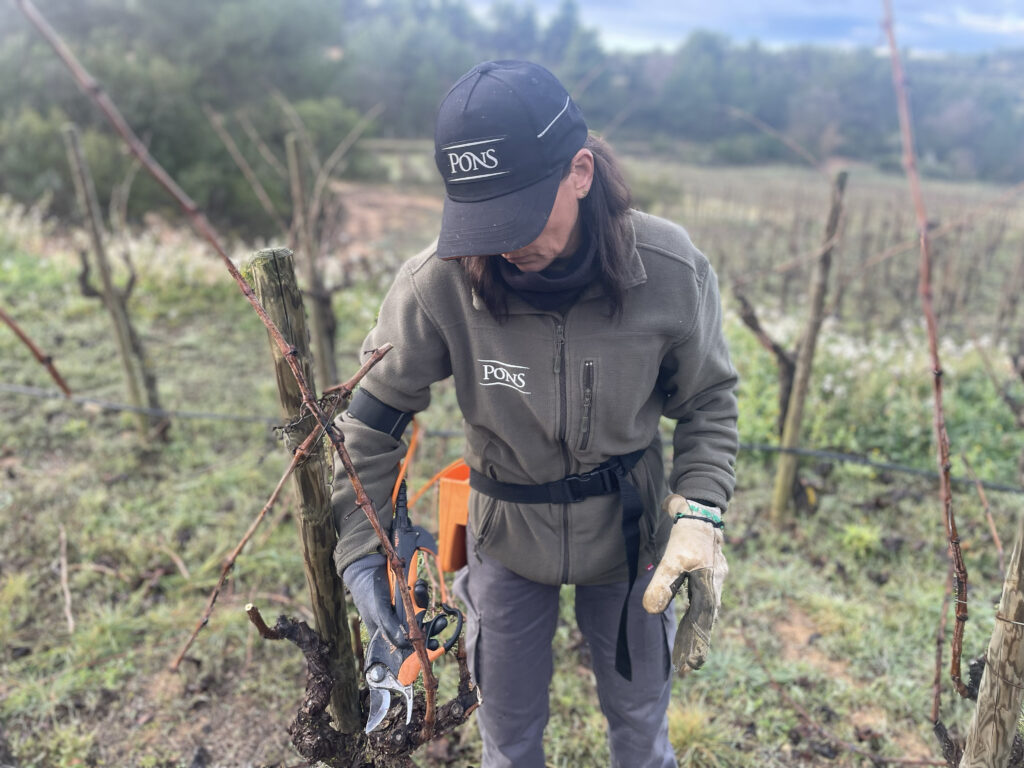Winter pruning not only prepares the vine for the next vegetative cycle but is also a key tool in vineyard management and cultivation. At Clos Pons, we apply these techniques with a detailed and personalized approach to produce exceptional wines. Below, we delve into the technical aspects that make pruning a cornerstone of viticulture and how Clos Pons implements these practices to ensure the excellence of our products.
1. Yield Regulation
Pruning directly controls the number of productive buds on the vine, impacting:
- Yield per plant: Fewer buds result in fewer grape clusters, allowing the plant to concentrate its resources on fewer grapes, thereby improving their quality.
- Homogeneous ripening: By reducing excess clusters, the plant achieves uniform ripening, essential for high-end wines.
In training systems like the trellis, this regulation is particularly critical to prevent overloading, which could compromise the vine’s structure and longevity. At Clos Pons, this practice allows us to balance and guide the development of our vines, ensuring that each cluster receives the necessary attention to reach its fullest potential.

2. Vine Architecture Design
Pruning defines the vineyard’s structure:
- Canopy height and extension: Pruning allows adjustments to the height and length of the arms, facilitating mechanization and improving access to sunlight.
- Microclimate management: A well-designed architecture enhances sunlight exposure and cluster ventilation, reducing the incidence of fungal diseases such as powdery mildew and downy mildew.
- Facilitation of cultural operations: Systems like Guyot or cordon Royat simplify tasks such as leaf thinning, shoot management, and harvesting, whether manual or mechanical.
At Clos Pons, we adapt these techniques to the specific needs of each vineyard, respecting the soil characteristics, grape variety, and climatic conditions of our region. This approach enables us to bring out the best in every cluster and capture the essence of our land in every bottle.

3. Influence on the Vegetative-Productive Balance
The relationship between the active leaf area and the number of clusters is a critical factor in vine physiology. This balance determines:
- Effective photosynthesis: A balanced canopy ensures sufficient carbohydrate production for the plant’s growth and fruit development.
- Accumulation of compounds in the grape: Proper balance promotes the synthesis of anthocyanins and tannins in red varieties, essential for wine quality.

Commitment to Quality at Clos Pons
We apply different types of pruning depending on the intended use of each fruit. This technical approach allows us to balance and guide the development of our vines, ensuring that each cluster receives the attention necessary to reach its fullest expression. By reducing the number of shoots, we direct the plant’s energy toward the most promising ones, fostering grapes of higher concentration and quality. Additionally, well-executed pruning improves ventilation and sun exposure, factors that contribute to optimal ripening.
Clos Pons’ commitment to excellence begins long before the wine reaches your glass. From pruning to harvest, every stage of the process is guided by a philosophy that prioritizes quality over quantity and respect for nature. Our winery has become a benchmark for the authenticity and character of our wines—something that would not be possible without the dedication we put into our vineyards.


 Català
Català